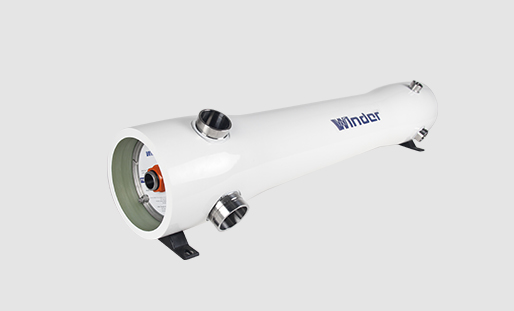Reverse osmosis membrane pollution and cleaning solutions
1. Pollutants in reverse osmosis membrane elements
After a period of normal operation, reverse osmosis membrane elements will be polluted by suspended matter or insoluble substances that may exist in the feed water. The most common of these pollutants are calcium carbonate scale, calcium sulfate scale, metal oxide scale, silicon deposits and organic or biological deposits.
The nature and speed of pollutants are related to the feed water conditions. Pollution develops slowly. If no measures are taken early, the pollution will damage the performance of the membrane elements in a relatively short time.
Regularly testing the overall performance of the system is a good way to confirm that the membrane elements are polluted. Different pollutants will cause different degrees of damage to the performance of the membrane elements.
2. Removal of pollutants from reverse osmosis membrane elements
The removal of pollutants can be achieved through chemical cleaning and physical flushing, and sometimes by changing the operating conditions. As a general principle, cleaning should be performed when one of the following situations occurs.
(a)Under normal pressure, the product water flow rate drops to 10-15% of the normal value.
(b)In order to maintain the normal product water flow rate, the temperature-corrected water supply pressure increases by 10-15%.
(c)The product water quality decreases by 10-15%. The salt permeability increases by 10-15%.
(d)The operating pressure increases by 10-15%.
(e)The pressure difference between the RO sections increases significantly (maybe there is no instrument to monitor this sign)
3.Common pollutants in reverse osmosis membrane elements and their removal methods:
(A) Calcium carbonate scale
When the scale inhibitor addition system fails or the acid addition system occurs, causing the feed water pH to rise, calcium carbonate may be deposited. The occurrence of calcium carbonate scale precipitation should be discovered as early as possible to prevent the growing crystals from damaging the membrane surface. If calcium carbonate scale is discovered early, it can be removed by lowering the feed water pH to between 3.0 and 5.0 for 1 to 2 hours. For calcium carbonate scale that has been precipitated for a longer time, citric acid cleaning solution should be used for circulation cleaning or overnight soaking.
Note: Make sure that the pH of any cleaning solution is not lower than 2.0, otherwise it may cause damage to the RO membrane element, especially at high temperatures. The highest pH should not be higher than 11.0. Ammonia water can be used to increase the pH, and sulfuric acid or hydrochloric acid can be used to reduce the pH value.
(B)Calcium sulfate scale
Cleaning fluid is the best way to remove calcium sulfate scale from the surface of the reverse osmosis membrane.
(C)Metal oxide scale
The deposited hydroxide (such as iron hydroxide) can be easily removed using the method for removing calcium carbonate scale described above.
(D)Organic sediments
Organic sediments (such as microbial slime or mildew) can be removed using cleaning fluid 3. In order to prevent re-breeding, an approved sterilizing solution can be used to circulate and soak in the system. Generally, it takes a long time to soak to be effective. For example, when the reverse osmosis device is out of service for three days, it is best to use disinfection.
(E)Cleaning fluid
It is recommended to use a cleaning fluid dedicated to water treatment when cleaning the reverse osmosis membrane element. It is very important to determine the chemical analysis of the contaminants before cleaning. A detailed analysis and comparison of the analysis results can ensure the selection of the best cleaning agent and cleaning method. The cleaning method and the cleaning effect obtained during each cleaning should be recorded to provide a basis for finding the best cleaning method under specific water supply conditions.
